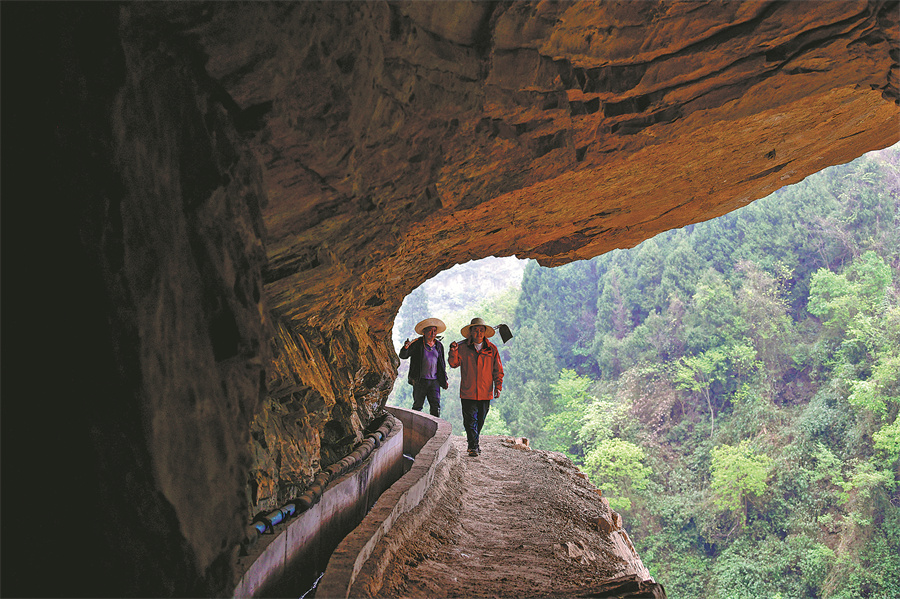Ensuring the flow of survival


On the precipitous cliffs, there are several canals that provide water for nearby farmlands in Shengji town, Bijie, Southwest China's Guizhou province. One of the daily tasks for canal maintenance team members is to clear leaves, branches and rocks.
In the quaint town of Shengji, nestled along the banks of the Chishui River, a remarkable tale of resilience and ingenuity unfolds.
The town experiences an average annual rainfall of around 900 millimeters.
However, its rugged terrain, characterized by deep gullies, steep slopes and valleys, embodies a classic karst landscape, posing challenges for effective surface water retention.
Prior to the 1960s, drought in Shengji was a disaster for farmers. Harvests were ruined, and even having a full meal and access to clean water seemed impossible. The agonizing reality of "water becoming a resource as precious as oil" plagued the residents, pushing them to endure hardships beyond measure.
In 1956, determined to break free from the shackles of severe water scarcity, the villagers made a resolute decision to alter their circumstances. They embarked on a mission to carve water channels into the sheer cliffs.
From the 1950s to the 1970s, with support of water conservancy departments, villagers tirelessly carved out 10 canals spanning more than 130 kilometers amid the rugged mountains and constructed eight reservoirs.
These channels continue to play a pivotal role in the community, ensuring a vital lifeline of water flows through the rugged terrain, sustaining the livelihoods of the inhabitants.
Through sheer determination and unwavering resolve, the residents of Shengji have transformed their landscape, turning what was once a barren and arid land into a thriving oasis.


















